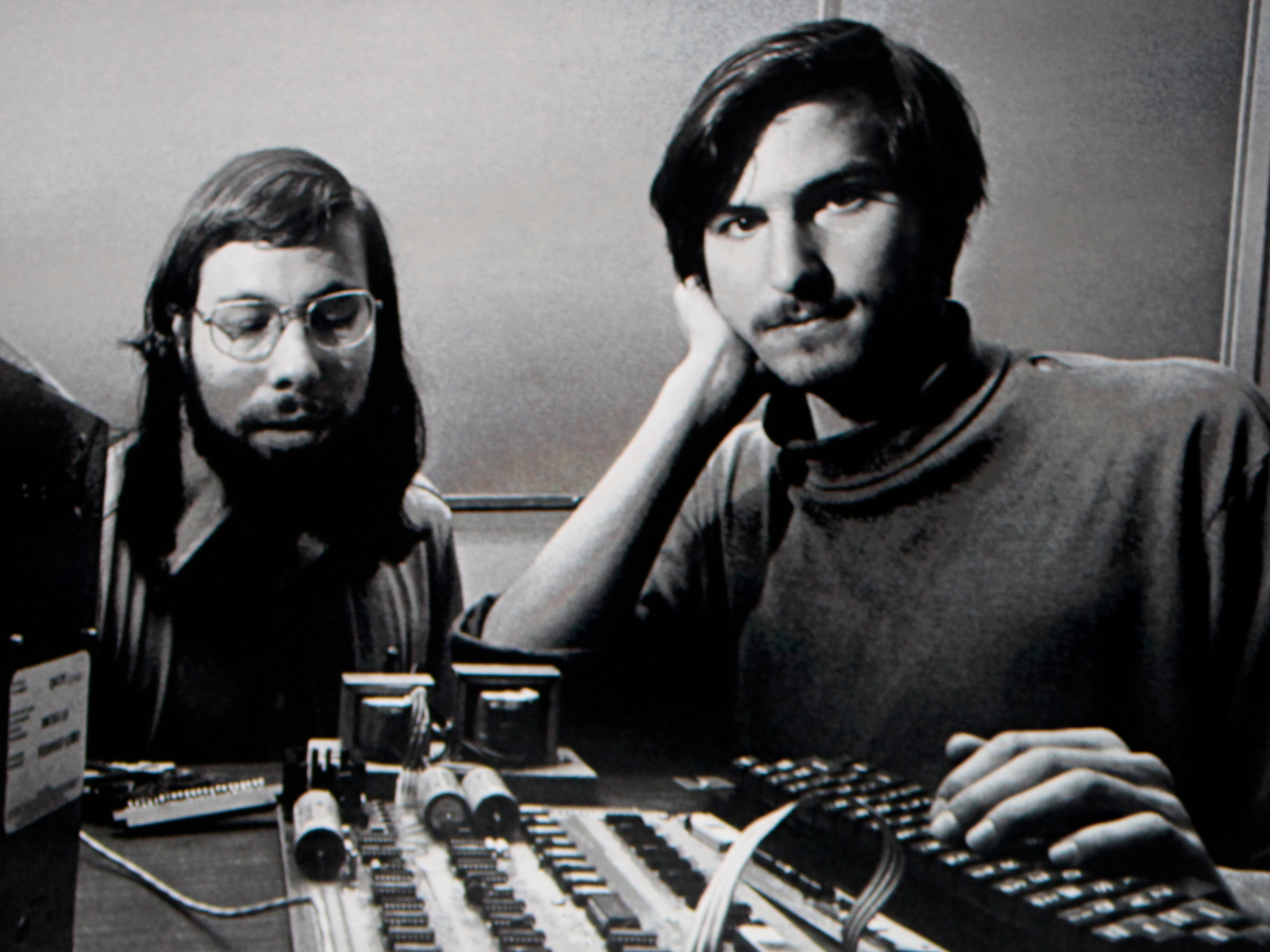- Most of the world’s most famous tech entrepreneurs had help building their companies.
- And while Mark Zuckerberg’s and Steve Job’s cofounders didn’t all become household names, they’re still credited with bringing Facebook and Apple to life.
- Tesla, for instance, had four cofounders, and none of them was Elon Musk.
- And Jack Dorsey is one of four people who helped create Twitter.
- Visit Business Insider’s homepage for more stories.
When a tech company reaches a certain level of success, the names of the founders often become synonymous with the brand they create – at least, that’s the case with founders who are the “face” of the company.
Still, we tend to forget that Steve Jobs, Travis Kalanick, and Bill Gates didn’t create Apple, Uber, and Microsoft alone.
On the contrary, these companies might not exist in the same capacity if it weren’t for the cofounders who fly under the radar either because they chose to steer clear of the spotlight or because the pressures brought on by the early years of a quickly growing company pushed them away. Many of these same people have moved on to create other multimillion-dollar ideas, while others left for a life of philanthropy, or pursued another passion.
Here are the lesser-known cofounders who helped create some of the world’s biggest tech companies.
Prachi Bhardwaj contributed to an earlier version of this article.
Steve Wozniak designed and built the first Apple computer, the Apple 1.
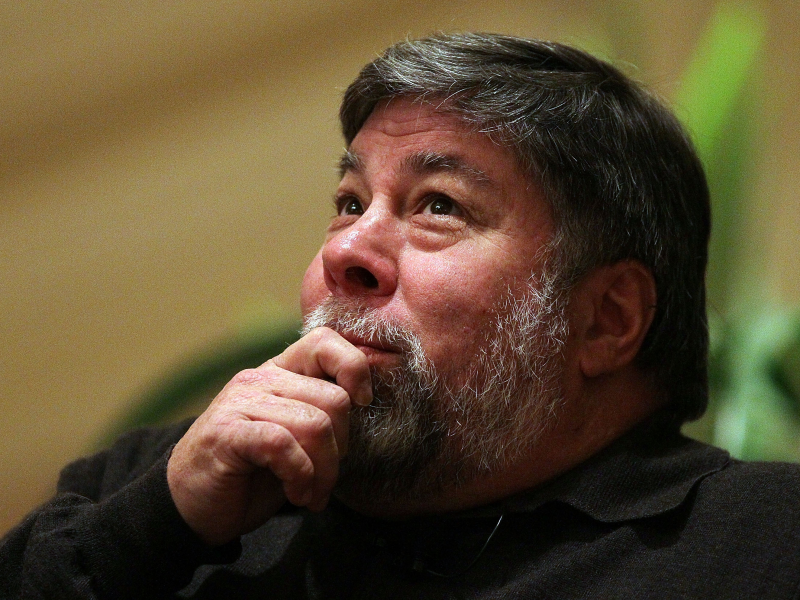
Steve Wozniak (a.k.a. "Woz") doesn't really need an introduction, but for those who aren't well-versed in the history of Apple, Wozniak formed Apple along with Steve Jobs in 1976.
Wozniak was working at Hewlett-Packard at the time, where he tried to share his computer design. When he was denied multiple times, Steve Jobs - who was working there for the summer - suggested the pair try to sell a fully assembled version of the design to a third party.
As Apple grew, Wozniak felt the emphasis on marketing hindered him as an engineer, and he left for good in 1985, but he's still the sole inventor on multiple Apple patents, including the "Microcomputer for use with video display."
The same year he left Apple, Wozniak finished earning his degree from UC Berkeley (under the fake name "Rocky Clark") and founded a company that built the first programmable universal remote control.
Wozniak has since cofounded two more companies, multiple non-profits, including the Electronic Frontier Foundation, and the Silicon Valley Comic Con. He's on multiple company boards, and remains on the official Apple employee list. He's also an Apple shareholder.
Ronald Wayne, the third cofounder of Apple, met Jobs and Wozniak while working at Atari.
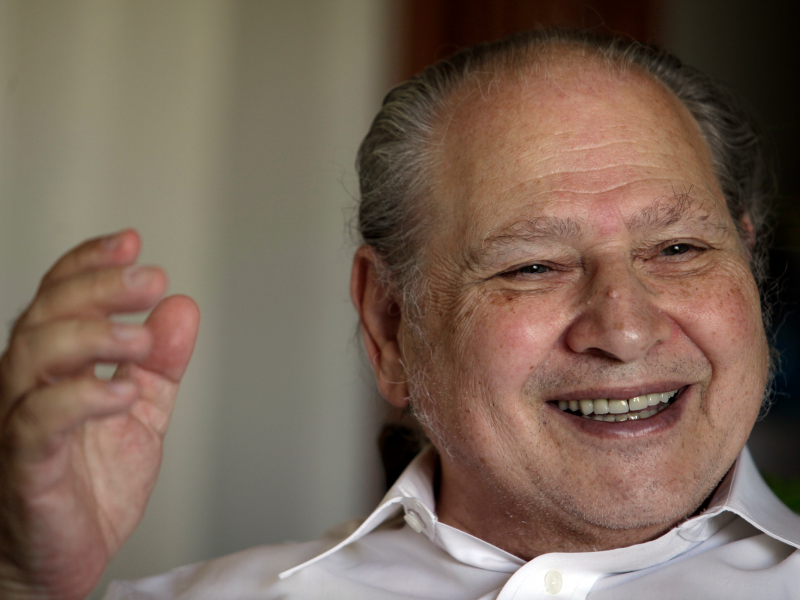
When Jobs and Wozniak formed "Apple Computer" in 1976 Ronald Wayne drew up the first logo and the partnership agreement that gave him 10% of the company.
But Wayne, who was 42 at the time, only lasted for 12 days before deciding he couldn't keep up with the pace the company was going. Wayne sold his shares for $800 - a decision he says he doesn't regret.
Today, Wayne has written two books, holds dozens of patents, and sells gold, rare coins, and stamps from his home in Nevada. He has since auctioned off his Apple archive.
Garrett Camp is credited with inventing Uber.
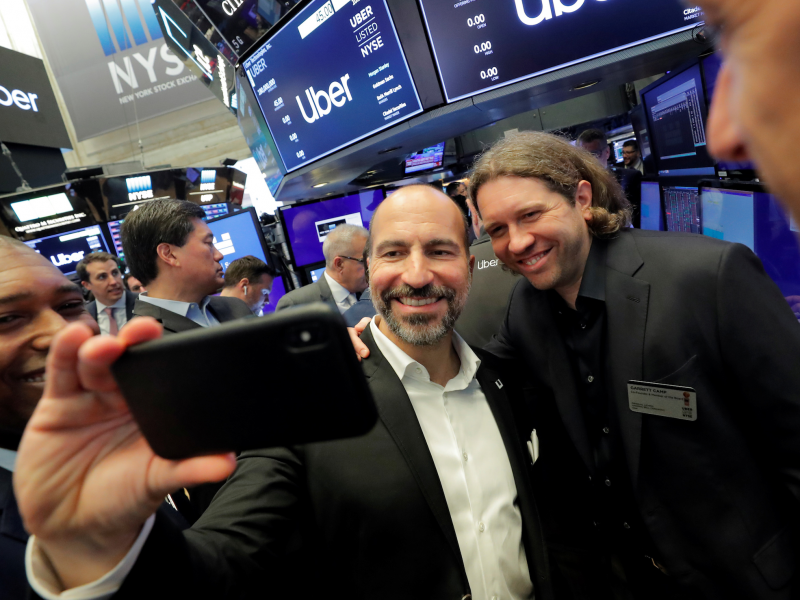
Former Uber CEO Travis Kalanick wasn't the one to come up with the original idea for Uber.
"Garrett [Camp] is the guy who invented that s---," Kalanick once said at an early Uber event in San Francisco. "I just want to clap and hug him at the same time."
Camp described what we know as "ride-sharing" to Kalanick when they attended the 2008 LeWeb conference: He wanted to create a convenient luxury car service that didn't cost a thousand dollars to use. Kalanick was on board, and UberCab started later that year.
The initial prototype was created by Camp. Kalanick was brought on as a "mega advisor" and wasn't named CEO until 2010, when he replaced then CEO Ryan Graves.
Camp earned his first fortune when he sold the web-recommendation tool StumbleUpon to eBay in 2007. He's also an investor, creator of startup studio Expa - which helps new founders build their own products - and launched a nonprofit called the Camp Foundation.
Camp served on Uber's board until March 2020. He owns about a 4% stake in the company.
Twitter had three cofounders: Ev Williams, Noah Glass, and Biz Stone.
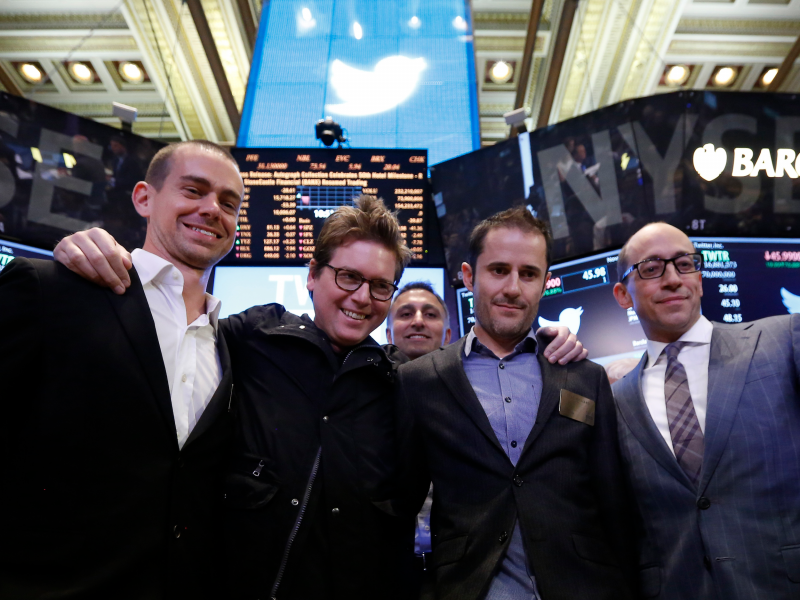
Jack Dorsey played a huge role in developing Twitter as a product, but he wasn't technically the founder of the company.
Twitter spun out from Odeo, a podcast company cofounded by Noah Glass and Evan "Ev" Williams (an ex-Googler who cofounded Blogger before it was sold to Google).
Williams pushed the team to come up with a new idea when iTunes announced the podcasting platform for iPods in 2005, and an idea from Jack Dorsey, an Odeo web designer, caught Glass' attention. Glass worked with Dorsey and a contract developer named Florian Webber to pitch Twitter, and came up with the name (then "Twttr"). The other two built the prototype, but the service eventually ran on Glass' laptop, an IBM Thinkpad.
Biz Stone, another ex-Googler brought on by Williams, helped the Twitter team out from time to time, and wrote some of the legal documentation.
The following year, Williams bought all of Odeo - including Twitter - from shareholders, changed it to Obvious Corp. (which he says he cofounded with Stone), and allegedly fired Glass. The reason isn't entirely clear, though the most common belief is that Williams and Glass had clashing personalities. (The entire history of Twitter, and the relationship between Glass and Williams, is spelled out in a Business Insider story from 2011.)
Today, Stone is an angel investor and cofounder of multiple companies. He has invested in both Dorsey's and Williams' other ventures.
Williams was briefly Twitter's CEO and still has a stake in the company, but is now the founder and CEO of publishing platform Medium.
Not much is publicly known about Glass other than his Twitter profile, which reads, simply, "I started this."
Jim McKelvey cofounded Square along with Jack Dorsey.

When Square was founded in 2009, the name "Jack Dorsey" overshadowed McKelvey's, but both parties were responsible for the popular mobile-payments app.
Dorsey had once written software for McKelvey, and after he was ousted as Twitter's CEO, the two happened to reconnect.
"We started Square because Jim McKelvey, our cofounder and my second boss (after my mother!), couldn't accept a credit card for his art," Dorsey said about McKelvey in the founders' letter from Square's S-1 filing before the company went public.
McKelvey shared his problem with Dorsey, and the two came up with the idea for Square. McKelvey designed the hardware and built the magnetic reader, while Dorsey wrote the software.
Today, McKelvey sits on the board of directors at Square. Since starting Square, he has founded two other companies: LaunchCode and Invisibly, according to his LinkedIn profile. He wrote a book, which came out in March, called "The Innovation Stack."
Automaker Tesla had four cofounders: Martin Eberhard, Marc Tarpenning, Ian Wright, and JB Straubel.
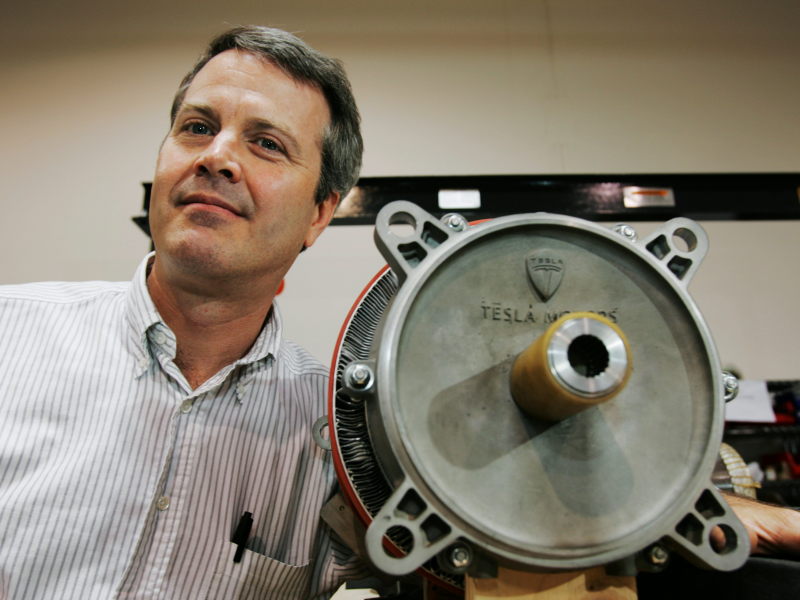
There are two versions of how Tesla got its start: One is that Tesla was actually the 2003 brainchild of Martin Eberhard and Marc Tarpenning. The two engineers raised as much as they could without help, but ultimately needed to land a big investor to lead the Series A funding round. Ian Wright - who was third to join the team followed by JB Straubel - and Eberhard successfully pitched Tesla to Elon Musk in 2004.
In Musk's version of events, both he and the Tesla Motors crew were equally interested in commercializing a tiny electric roadster called the tZero. The company behind the car, AC Propulsion, declined to bring it to market, but did introduce Musk and Tesla Motors. The group decided to team up, which led to the formation of Tesla as we know it today.
Either way, Musk led two funding rounds and co-led a third before Tesla's first production vehicle, the Roadster, was finally unveiled in 2006. Both Eberhard and Tarpenning left after Eberhard was demoted from his position as CEO in 2007, and one CEO later, Musk took on the leading role.
Eberhard then sued Musk and Tesla, claiming libel, slander, and breach of contract. Eberhard alleged that Tesla had wrongfully tried to "rewrite history" by taking away his position as the founder. He eventually withdrew the case and part of the resolution was that there would be five official founders of Tesla.
Today, Eberhard and Tarpenning have worked together on a number of other electric vehicle projects, including Volkswagen and SF Motors. Wright left a year after joining Tesla, and founded Wrightspeed, which develops electric parts for trucks. JB Straubel was still the CTO of Tesla until July 2019.
Snap CTO Bobby Murphy founded the company with Evan Spiegel.
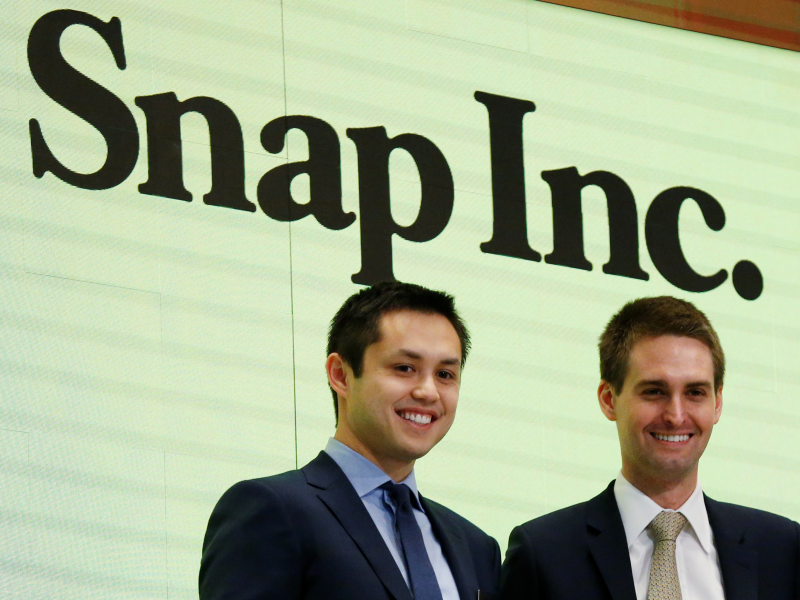
Bobby Murphy and Evan Spiegel met when they were Kappa Sigma fraternity brothers at Stanford University.
Murphy was studying mathematical and computational science and Spiegel was studying product design - they put their heads together to develop the prototype of an app that would make pictures disappear after they were shared.
Murphy worked 18-hour days coding the prototype, and took a day job with the iPad-based register company Revel Systems before Snapchat took off. He remains the CTO of Snap and has written most of the code for today's Snapchat application.
Both Snap cofounders have a nearly equal net worth (between $4.6 billion and $4.8 billion as of September 2020, according to Forbes), but Murphy prefers to keep a much lower profile than his counterpart.
Snap initially had a third cofounder, Reggie Brown.
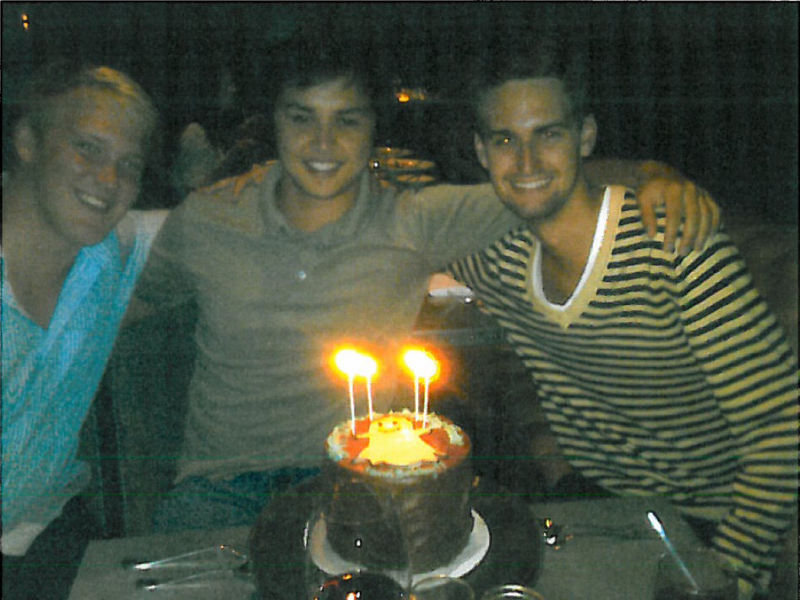
The Spiegel-Murphy duo was initially a trio, and the forgotten third member - Reggie Brown - was reportedly the idea man. In 2013, he took the matter to court.
Brown, also a Kappa Sigma brother, approached Spiegel with a concept for an app that sends pictures that disappear shortly after they're shared. Spiegel recruited Murphy because neither he nor Brown had the coding chops. The three of them reportedly had a non-written agreement to share ownership and profit: Spiegel as CEO, Murphy as CTO, and Brown as CMO.
Brown came up with "Picaboo," the first name for the app, as well as the logo: a now widely recognizable ghost, who he named "Ghostface Chillah." But months after Snapchat launched in the iTunes Store - a glimpse at the celebration is pictured above - Spiegel and Brown reportedly felt that Brown was bringing little else to the table as CMO, and allegedly changed the passwords on the startup's servers and accounts.
In 2013, Brown sued his two former friends for breach of contract, and they settled a year later. Snapchat released a statement saying that Brown did come up with the idea, and he was paid $157.5 million, according to Snap's SEC filings for 2014 and 2016. Brown has kept a low profile since.
The little that we know about Brown's whereabouts are that he hadn't had a paying job at the time of the lawsuit, and that he graduated with a master's degree in management studies from Duke University in May 2014.
Microsoft was founded by two people: Bill Gates and the late Paul Allen.
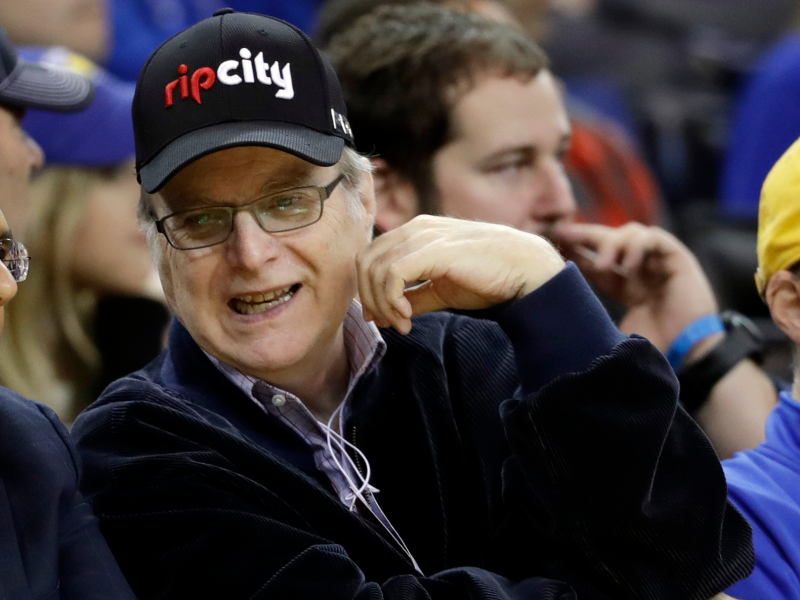
Bill Gates and Paul Allen became friends in high school and founded Microsoft in 1975. Allen came up with the name (originally Micro-Soft, according to a 1995 interview in Fortune), and then sealed the deal for a technology that attracted IBM, resulting in Micro-Soft's take-off.
Allen left Microsoft in 1982 when he was diagnosed with Hodgkin's lymphoma, a cancer that affects the immune system. He had another bout of cancer in 2009, and in 2018, announced that his cancer had returned for the third time. Allen died soon after at age 65.
Allen was a philanthropist, donating more than $2 billion during his lifetime. He was also involved in numerous other ventures, including his ownership of the Portland Trail Blazers and Seattle Seahawks and the Allen Institute for Brain Science.
Marc Randolph cofounded Netflix along with Reed Hastings.
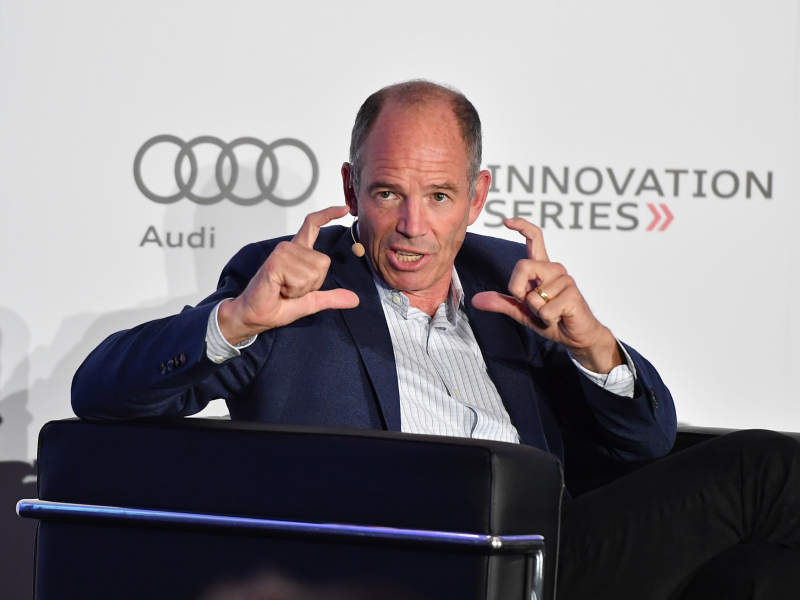
Marc Randolph and Reed Hastings met when Hastings' company Pure Atria, where he was the founder and CEO, acquired the software company where Randolph worked. Hastings appointed Randolph as vice president of corporate marketing, but soon after, Pure Atria was acquired by Rational Software.
During the four months while the Rational-Pure Atria acquisition was being finalized, Hastings and Randolph commuted together to and from Pure Atria's offices in Silicon Valley, actively brainstorming ways to leverage trends for a new business idea, according to Randolph's telling of the story. "And back then, Amazon is crushing it with books. What else can we crush it with?"
After the two mailed a CD to Hastings' home and it was delivered unharmed, Hastings invested money into the business idea and went to Stanford for a year to earn his master's degree, while Randolph took the reins.
Randolph was the first CEO of Netflix. He named the company, and designed both the brand and the interface. Hastings was initially going to be an investor and a board member, but when he started coming to the office more often, executives agreed it was time for a change. Randolph ceded the position to him in 1999 to turn to product development, because he missed the start-up phase of the company.
"As I look back on what some of the smartest things I ever did at Netflix, I think having [Hastings] come back and be a very, very major part of the company, eventually becoming CEO in my place, was probably the smartest thing I ever did there," Randolph said in an interview with Silicon Valley Business Journal.
Randolph stayed on the board until 2003, a year after the company went public. Since then, he's been a board member and founder of a number of companies, including data analytics company Looker, and a keynote speaker about entrepreneurship and innovation based on his time with Netflix.
PayPal was cofounded by multiple people besides Peter Thiel: Max Levchin, Luke Nosek, and Ken Howery.

The former employees of PayPal came to be known as the "PayPal mafia," because a number of them went on to found other huge technology companies. But it all started with Peter Thiel.
Thiel met Max Levchin when Thiel was giving a lecture at Stanford, according to Conner Forrest's reporting in TechRepublic, and the two began working together on a digital wallet. Thiel attended Stanford, and Levchin attended the University of Illinois at Urbana-Champaign, which is where almost all of their recruits came from.
Luke Nosek had attended UIUC with Levchin, where the two had worked together on cofounding a media company, and Ken Howery was recruited by Thiel after graduating from Stanford.
Thiel, Levchin, and Nosek founded Confinity: a company that made software that could transfer payments between handheld devices in 1998, like PalmPilots and PDAs. Thiel was the CEO, and Levchin was the CTO. Nosek was the VP of marketing, strategy, and business development, and Ken Howery was CFO. The product was called PayPal.
In 2000, X.com's founder Elon Musk made the decision to acquire Confinity. He was almost immediately replaced by Peter Thiel as CEO, who changed the name to PayPal, Inc. After PayPal was acquired by eBay in 2002, most of the original PayPal mafia moved on.
Howery was eBay's director of corporate development, but eventually rejoined Thiel in 2004 to be the VP of private equity at one of Thiel's VC practices, Clarium Capital Management. He then went on to cofound Founders Fund, Thiel's famous VC firm in San Francisco, with Thiel and Nosek. These days, Howery is the US ambassador to Sweden.
Nosek left Founders Fund in 2017 to start his own investment fund called Gigafund, a SpaceX-focused fund.
Levchin founded social gaming company Slide in 2004. Google bought it for $182 million in 2010, and Levchin was allowed to run it independently until Google cofounder Larry Page shut it down in 2011. Levchin later founded HVF, which spun out into financial technology company Affirm. He has served as a board member for a number of companies, including Yelp and Evernote.
Dustin Moskovitz, Chris Hughes, Andrew McCollum, and Eduardo Saverin all helped create Facebook.
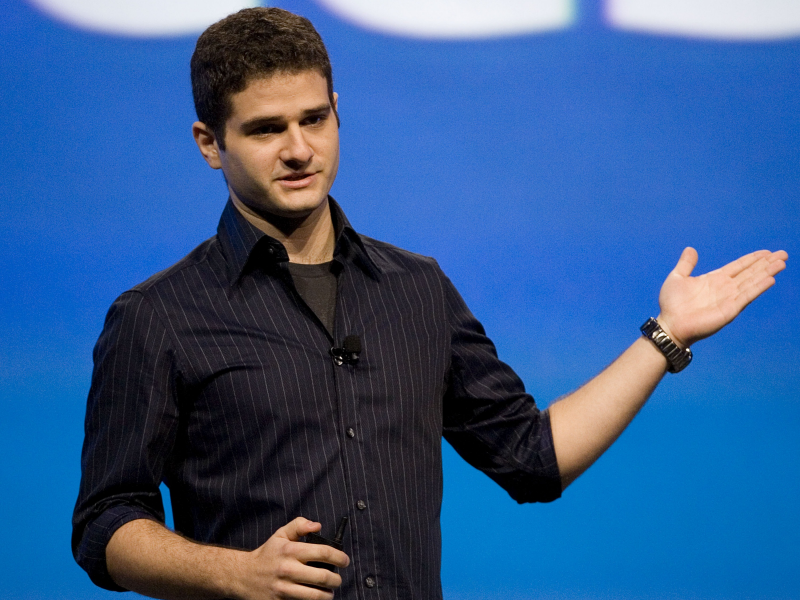
The five Facebook founders were classmates at Harvard University. Zuckerberg, who was the mastermind behind thefacebook.com, as the site was called at the time, recruited roommates Moskovitz and Hughes, and two other friends to help him develop it.
Zuckerberg had known Eduardo Saverin for about a year when he invited him to join. Saverin was Facebook's first investor and took on the business partner role in the relationship during the early stages of Facebook.
Moskovitz, keen on helping Zuckerberg expand the site, learned the PHP language in "a couple of days," according to Zuckerberg, and became the company's first CTO. Hughes served as the spokesman, beta tester, PR specialist, customer service representative, and everything else user-facing, but he didn't write code or handle any of the business.
Zuckerberg knew Andrew McCollum from all of their computer-science classes, and he asked him to design Facebook's first logo - a face that was actually a sketch of actor Al Pacino. McCollum also worked on Facebook's file-sharing program called Wirehog, which never took off the way Zuckerberg planned.
The summer after the site launched in 2004, Zuckerberg, Hughes, and Moskovitz traveled to Palo Alto, California. Zuckerberg and Moskovitz decided to drop out of Harvard and stay to relocate their operations and start hiring employees. Hughes went back when the semester started, but joined them again when he graduated in 2006.
While they were in Palo Alto, Zuckerberg pushed Saverin out, and diluted his shares to 10% because of what Zuckerberg believed to be Saverin's lack of contribution to the company.
Saverin eventually sued Facebook over breach of fiduciary duty. He walked away with 4% of the company, and today he lives in Singapore, having renounced his US citizenship in 2011 - a year before Facebook's IPO, meaning the taxes he had to pay on capital gains were significantly reduced.
McCollum left in 2006 is currently the CEO of internet television company Philo.
Hughes left Facebook in 2007 to volunteer for Barack Obama's presidential campaign, did non-profit work with Jumo and UNAIDS, and purchased a stake in "The New Republic" magazine, which he later sold. In May 2019, Hughes dropped a bombshell by publishing an op-ed in The New York Times that called regulators to break up Facebook in order to protect users and competition.
Moskovitz left in 2008 to cofound team management app Asana, which recently filed to go public.
Mike Krieger was brought on as a cofounder when Instagram was still in its infancy.
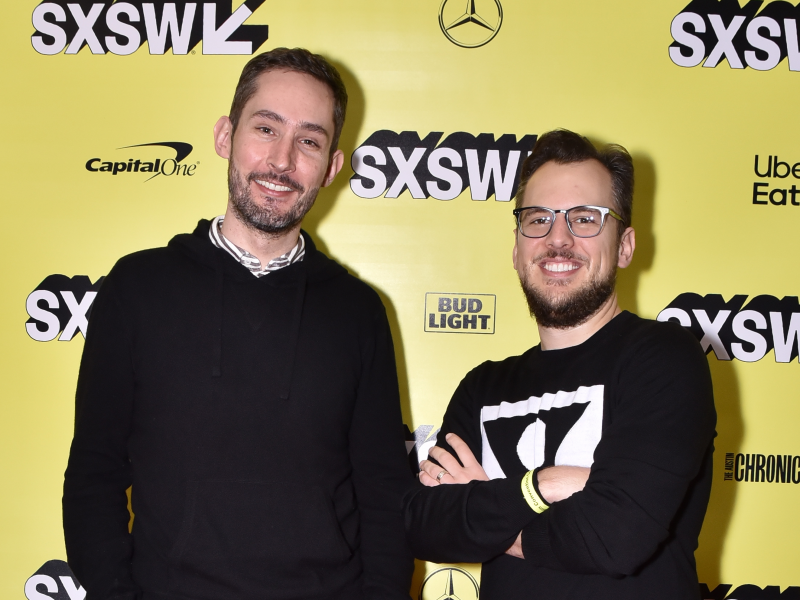
Kevin Systrom might have been the more public face of Instagram, but Mike Krieger was there when Instagram was still called "Burbn."
Krieger, who had been two years behind Systrom at Stanford, had been working on his own app, called Meebo, when Systrom recruited him. Soon after Krieger joined, the pair decided to pivot Burbn, eliminating most of the features to focus solely on photo-sharing.
In April 2012, Mark Zuckerberg and Facebook acquired Instagram for $1 billion. The duo stayed at Facebook until 2018, when Systrom and Krieger abruptly announced that they were stepping down as CEO and CTO, respectively, and leaving Instagram altogether.

